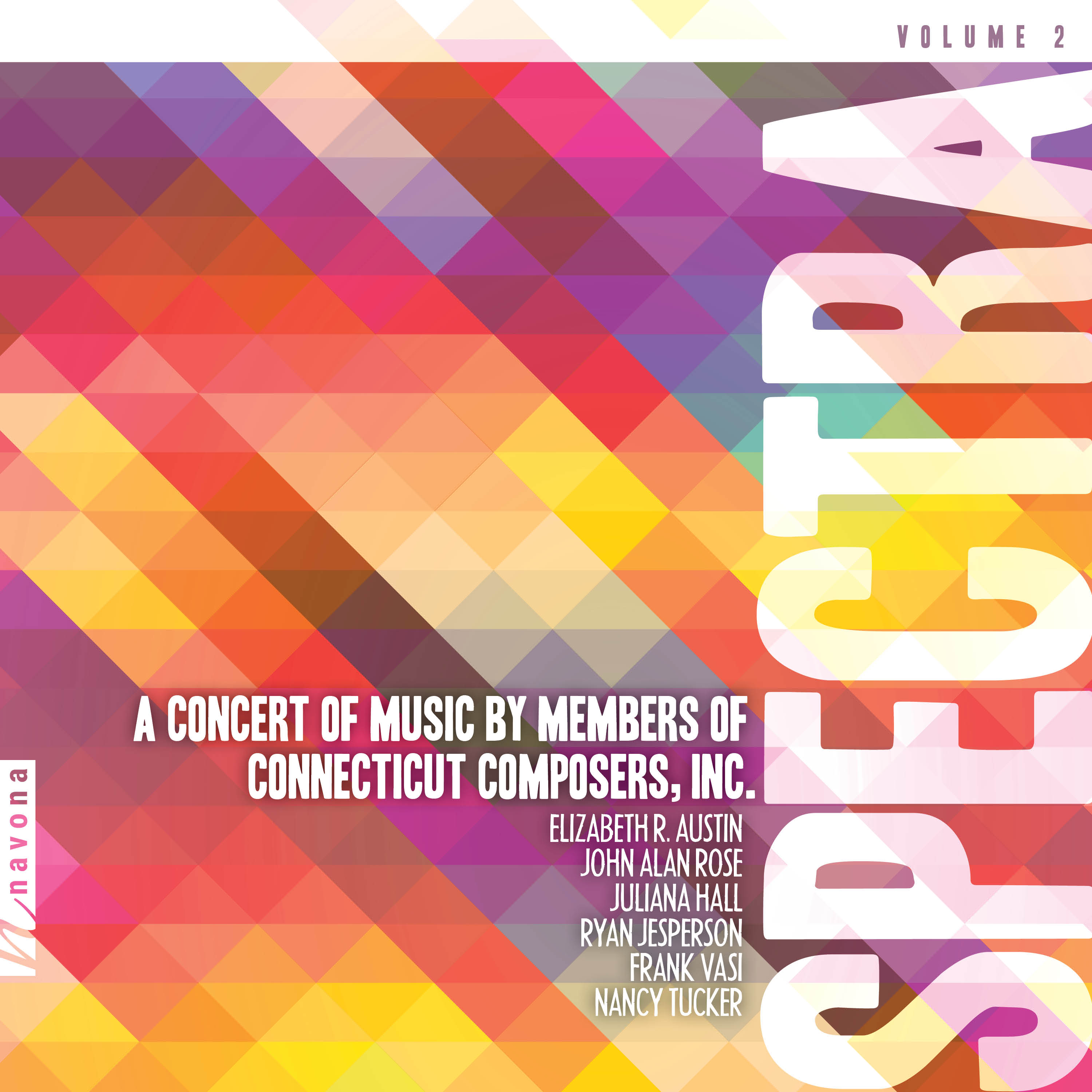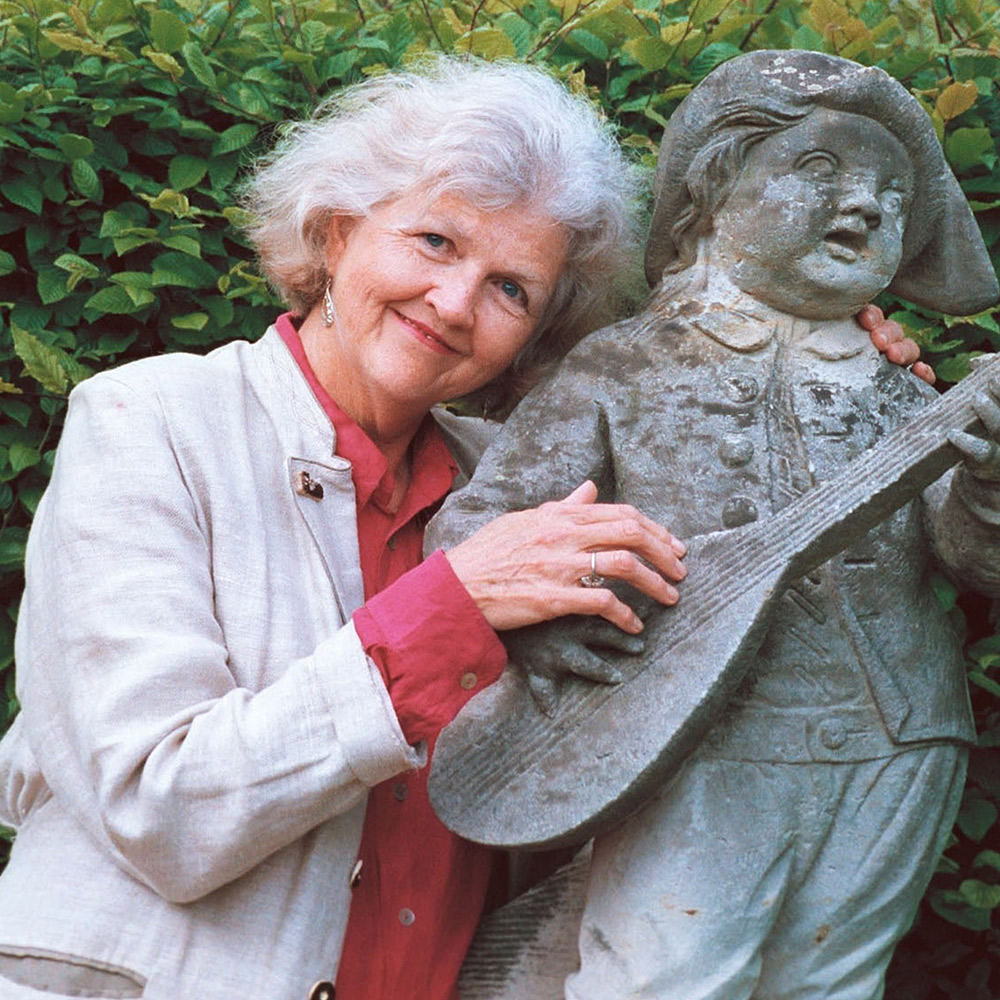
Born in Baltimore, Dr. Elizabeth R. Austin received her early musical training at The Peabody Conservatory. When Nadia Boulanger visited Goucher College, she awarded Elizabeth a scholarship to study in Fontainebleau France. Elizabeth’s awards have included a Connecticut Commission on the Arts grant, selection by GEDOK (Society of Women Artists in Germany/Austria) in its 70th anniversary exhibition, and First Prize in IAWM’s 1998 Miriam Gideon Competition. In 2001, The Rockefeller Foundation awarded her a residency at Bellagio Italy. Dr. Michael K. Slayton, Professor of Theory/Composition at Blair School of Music, Vanderbilt University, wrote his DMA dissertation (University of Houston, 2000) on Elizabeth’s music. He also edited Women of Influence in Contemporary Music: Nine American Composers, published by Scarecrow Press in 2011, which included his chapter on Elizabeth’s music.
Elizabeth was the BMI/Vanderbilt University Composer-in-Residence in 2015. An excerpt from her opera I am one and double too was performed there in a portrait concert. The Hartford Musical Club’s commissioned choral music was premiered in an Austin portrait concert in honor of its 125th anniversary in 2016. Her music has also recently been performed in Berlin and New York City. It is published by Arsis Press, Tonger Musikverlag, Peer Musik, Certosa and recorded on the PARMA (Capstone) and Leonarda labels among others. All of her scores are available through the American Composers Alliance.
Today, Elizabeth is our featured artist in “The Inside Story,” a blog series exploring the inner workings and personalities of our artists. Read on to learn what instrument Elizabeth regrets having sold to this day…
When did you realize that you wanted to be an artist?
I began to compose when I was 7; the occasion was a lullaby for my baby brother Charlie. I had just begun public school class piano and, since age 3, would run to the keyboard after watching my older sister, my idol, take her piano lesson at home. I never dared to think of myself as “an artist:” my life was too plebeian, too middle class, too ordinary. It was after turning 40, however, that I realized that my passion and focus on writing music could no longer be put off. Before this, we raised three children, one of them quite ill with asthma. Unlike young women today, I simply could not pursue my calling while mothering our brood. After the children grew a little older, I returned to music with vehemence and was accepted into the M.M. program at The Hartt School of Music (U. of Hartford). Even then, though, I never aspired to consider myself an artist. An artist is a selfless craftsman, in possession of the finest and most beloved of tools. In most cases, these tools are honed by an outstanding education, which I gratefully received. An artist is compelled to compromise daily between tasks at hand and the relentless lure of “the road not taken.” This may sound romantic: it is not, as one may read from the biographies of artists through the ages.
It was only when my music was so well performed and even sought after, that my personal identity became stamped with the vocation of art. This breakthrough happened between 1988 and 1993, as I spent one academic semester a year in Mannheim Germany, where my husband Gerhard directed a professional study abroad program. Through various music institutions and organizations, my music enjoyed many performances and publishing opportunities. When artist/performers realized the intent of my compositions with such elation, I became ever more aware of the responsibility and necessity to find more and more time for writing.
The listener is also an artist. To listen, react, assemble the musical elements in his/her mind, and tuck the music into his/her personal emotional inner life is truly an art in itself.
I still, however, feel somewhat guilty that I spend my life making the air vibrate! How I admire those people who devote themselves to healing, to human and animal rescue, and to spending their energy with those less fortunate.
What was your most unusual performance?
Although I perform occasionally (piano) when my music is included in a program, I am fortunate enough to have fabulous artist/performers, like Laura and Erberk, who actually give me inspired insight into my own writing.
I consider it vital to a concert of new music, however, to add to performances at hand by welcoming one’s listeners and thanking them for coming and for sharing their reactions with both composers and performers. It is unfortunate that a listener thinks that a lot of musical knowledge is required before hearing new music. The only “ticket” is the curiosity to embark on an aural adventure. I hope that this “performance” may no more be thought of as unusual!
Whenever I curate a program, I talk about the connections which new music enjoys with past music. And, too, the elemental urge to sing like a bird reflects our eternal connection to the natural world. Our oldest human ancestors used their voices to express their feelings. Every instrumentalist prioritizes a “singing tone,” even though he/she is not a singer. Like Messiaen, I imitate bird song in the second movement of B-A-C-Homage. I could cite many composers, past and present, who are similarly inspired!
If you could instantly have expertise performing one instrument, what instrument would that be?
Dr. Elliot Galkin, one of my professors at Goucher College, my alma mater, and afterwards, Director of The Peabody Conservatory, suggested that I learn a stringed instrument in order to be conversant with string writing and performance. He found me a viola and, in the same year, invited Mlle. Nadia Boulanger to Goucher. Mlle. Boulanger awarded Ruth Dahlstrom (Galkin) and myself scholarships to study at Fontainebleau. I took my viola along and proceeded to study with the inimitable Pierre Pasquier. As I recall, I even helped his son repair his bicycle, not adding to my string technique! When I gave birth to twins, within the first year of my first marriage, the financial shoestrings caused us to give up certain pleasures. The viola was sold. This may be the regret of my lifetime! The music on this album is not only an homage to Bach, but also to the glorious viola!
If you could spend creative time anywhere in the world, where would that be and why?
I had the great good fortune to garner a Rockefeller Foundation fellowship for a residency in Bellagio in September, 2001. Sure enough, I was on the plane as 9/11 happened, landing in Milan and being delivered to Bellagio amidst phone calls from worried families as to our safe arrival.
Despite this tragic event, my month at Villa Serbelloni was ineffable – allowing me days of solitude in my forest studio and daily conversation with global “makers and movers,” who were all passionate about their particular projects.
Right away, I wrote a bell-tolling requiem for the 9/11 victims. I then concentrated on my seminal solo piano Rose Sonata, also available on PARMA’s Navona NV5964.
A close second spot to spend the joyful but fiercesome time of writing music would be Watch Hill RI. Whenever I need the ecstasy which the natural world brings, we go to the sight, fragrance, and sound of the sea and we sit on the sand and “osmose”… My Symphony #2 ‘Lighthouse’ has the sequence of “off-on” signals of Watch Hill’s lighthouse as the structural catalyst for the first movement of this music (Capstone CPS- 8779).
What does this album mean to you personally?
Sharing this musical space with other Connecticut Composers, Inc. composers means a lot to me. I was President of CCInc. for about a decade and stand by the high bar which our members set for themselves. The musical quality and variety of this album speak to the high esteem in which I hold their music.
Is there a specific feeling that you would like communicated to audiences in this work?
Like many other living composers, I incorporate musical quotes of the past into the fabric of the present. This allows the listener an anchor of sorts: to be transported suddenly into another musical era, then to have some fun guessing the source of such quotes.
I’ve dubbed this quotational technique “windowpaning.” The listener peers through the window of new sounds to discover the tonal motive. Its consonance becomes an alternative sonority. I’ve enjoyed a small musical joke: surrounded by contemporary harmonies, the “well-behaved” quote sounds like an upstart!
I hope, however, that you relish the beautiful borrowings from Bach in this particular musical homage. Bach’s music, even the spelling of Bach’s name, provide the impetus for the motivic expansion throughout the work. Hats off to Bach and much gratitude for tuning in to my own sound world!

SPECTRA VOL. 2 will be available through Navona Records for streaming or purchase on October 12. Click here to pre-order.

Elizabeth R. Austin's music is meticulous and complex, filled with movement, growth, and turning points. Not a bad description for her own life.” This quote, from an article in SCOPE (Winter, 2011) written by Michael K. Slayton, continues to be relevant to this octogenarian, whose focus on writing music has become even more intense!
